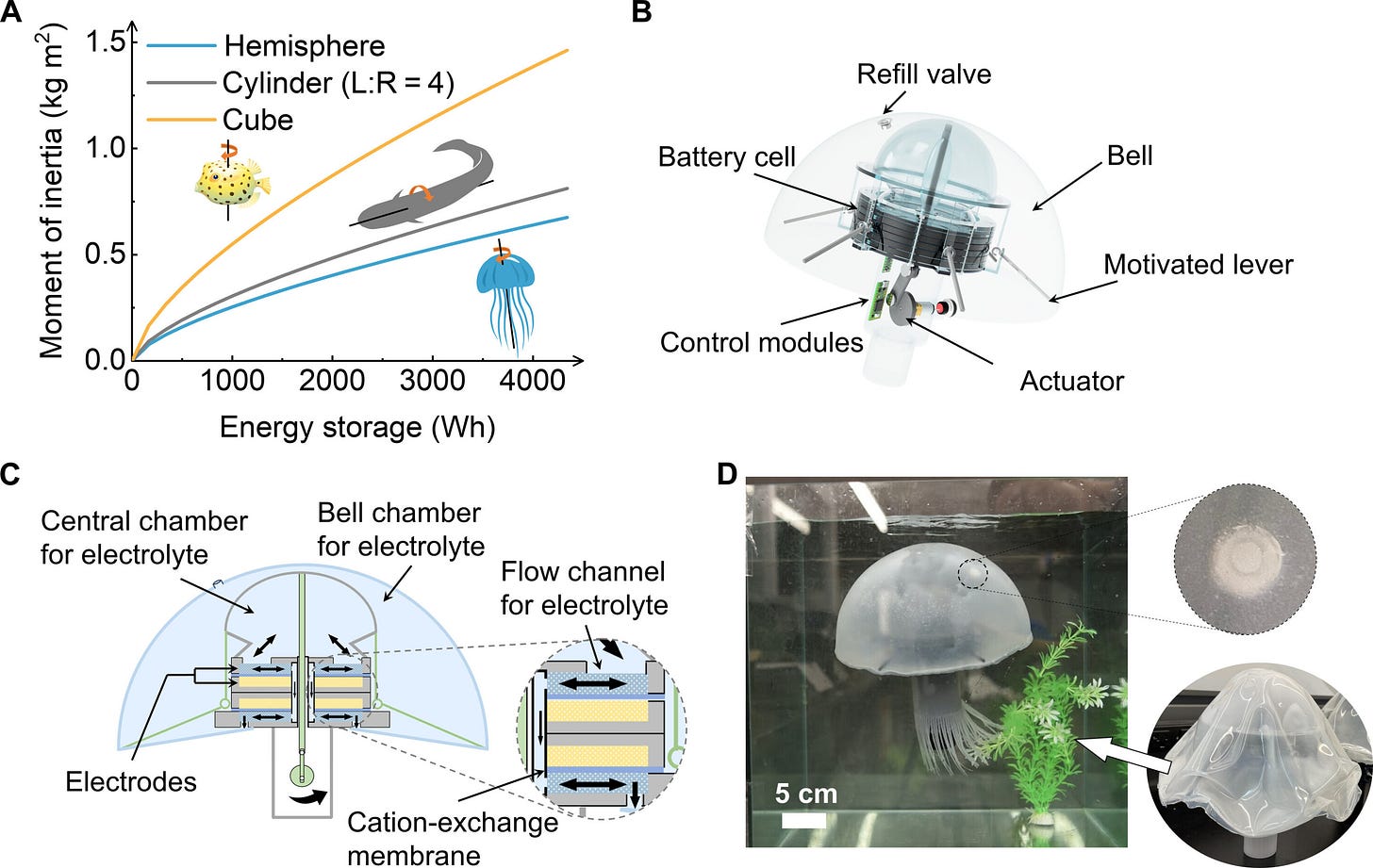EP.50 A JELLYFISH-INSPIRED ROBOT
Refurbishing electric devices with cobots, acquisition in household robots space, China aims to mass produce humanoids & much more...
1X acquires another humanoid company 🏠
1X has acquired Kind Humanoid, uniting two teams with a shared vision of creating humanoid robots for homes and other environments. The collaboration is going to accelerate the development of general-purpose robots that connect with people and assist in daily tasks.
Kind Humanoid, a Palo Alto-based startup founded in 2023 by Christoph Kohstall, developed Mona, a bipedal humanoid robot designed for household and healthcare applications. The company combined bio-inspired design with artificial intelligence and large language models (LLMs) to enable Mona to interact naturally and safely with humans.
1X shares a similar mission of building humanoid robots that work alongside people. The Norway and California-based company, which raised $100 million in Series B funding last year, is now incorporating Kind’s expertise to accelerate progress.
Cobots refurbishing electronic appliances! 🔌
German start-up Repartly is using ABB’s GoFa™ collaborative robots to revolutionize the repair and refurbishment of household electronic appliances. With three GoFa cobots handling sorting, visual inspection, and precise soldering, the company has significantly boosted efficiency. The cobots automate tedious tasks such as sorting circuit boards by condition and conducting precise soldering, which has helped reduce repair times by 50%.
Repartly's mission is to support the circular economy by extending the lifespan of appliances through same-day repair services. Customers can send in defective electronics, and Repartly ensures a quick turnaround with a fixed pricing model. If repair isn’t possible, customers receive an offer for a refurbished part. To scale its operations, Repartly adopted ABB’s Robotics as a Service (RaaS) model, allowing flexible access to automation without large upfront costs.
Using ABB’s easy-to-program software and plug-and-play end-of-arm tools, Repartly has already filed a patent for its automated repair station. The GoFa cobots, with their class-leading speed of 2.2 m/s, are enabling the company to process large volumes of electronics efficiently while freeing up staff to focus on complex repairs and business expansion.
🦾 Feature sponsorship with ABB Robotics
Worm and jellyfish-inspired robots! 🐛
Cornell researchers have developed worm and jellyfish robots powered by "embodied energy," integrating power sources directly into their bodies to reduce weight and improve efficiency.
The jellyfish robot uses a redox flow battery (RFB) that doubles as a hydraulic system, enabling it to propel upward by contracting its bell. Battery upgrades, including graphene coatings and bromine additives, extend its operational time to 90 minutes, making it ideal for ocean exploration.
On land, the modular worm robot uses pods with built-in motors to inch forward or climb vertically in pipes. Its lightweight design and efficient energy use make it well-suited for narrow-space exploration and repairs. These innovations demonstrate the potential for embodied-energy robots to revolutionize underwater and land-based applications.
A jellyfish robot powered by the RFBs.
UBTech gears up for mass production of humanoids 🦿
Shenzhen-based robotics company UBTech plans to begin mass production of its industrial humanoid robots by the end of 2025, delivering between 500 and 1,000 units this year alone. Key customers include major automakers, Apple supplier Foxconn, and logistics giant SF Express.
While UBTech’s long-term vision is to bring humanoid robots into households, the company is currently focused on industrial applications. “Factories provide a simpler and more stable environment for humanoid robots to operate and train,” said Michael Tam, UBTech’s chief brand officer.
The Walker S Series is at the heart of UBTech’s efforts. More than 60% of this year’s deliveries will feature the upcoming Walker S2, (on the pic) a lighter and stronger version set to launch in Q2 2025. UBTech also plans to release the even more advanced Walker S3 later this year, keeping pace with fierce competition in China’s robotics sector.
Despite posting a net loss of 516.4 million yuan (US$70.5 million) in the first half of 2024, UBTech remains focused on AI investment over profitability.
Meme of the week 🤖
Alright, curious about the implications. Share your thoughts on the Stargate project in the comments!
10th Robotic Grasping and Manipulation Competition 🦾
The 10th RGMC will be held during the IEEE/RAS International Conference on Robotics and Automation (ICRA) 2025 in Atlanta, USA, from May 19–22, 2025.
Participants will tackle robotic grasping and manipulation tasks in dynamic and realistic scenarios, such as handling unknown objects with varying properties and adapting to uncertain conditions.
RGMC has been a leading event since 2016, engaging over 70 teams worldwide in challenges such as bin picking, pouring liquids, folding clothes, and human-robot handovers.
Applications are open until January 31, 2025. The competition features multiple tracks covering a range of tasks.
DeepSeek’s pushes Past U.S. sanctions to rival ChatGPT! 💬
Chinese AI startup DeepSeek has made waves with the release of its R1 model, an open-source reasoning system that matches—or even surpasses—OpenAI’s ChatGPT o1 in key benchmarks. Despite strict U.S. export controls limiting access to advanced chips, DeepSeek has turned these challenges into opportunities for innovation, focusing on efficiency and resourcefulness.
The Hangzhou-based company, founded in 2023 by Liang Wenfeng, developed R1 with limited computing power, relying on NVIDIA GPUs with performance caps. By redesigning its training processes to reduce memory usage and speed up calculations, DeepSeek achieved remarkable results. R1 excels at complex tasks like math and coding, using a “chain of thought” approach for step-by-step problem-solving.
DeepSeek has also released smaller versions of R1 that can run on laptops, making AI more accessible to researchers and developers globally. Liang’s strategic foresight included stockpiling tens of thousands of NVIDIA A100 chips before export bans, enabling DeepSeek to navigate hardware limitations and innovate within constraints.
The company’s commitment to efficiency mirrors broader trends in China’s AI industry, where open-source culture is gaining traction. With 36% of global AI language models originating in China, the country is positioning itself as a significant contributor to the AI race despite restrictions.









